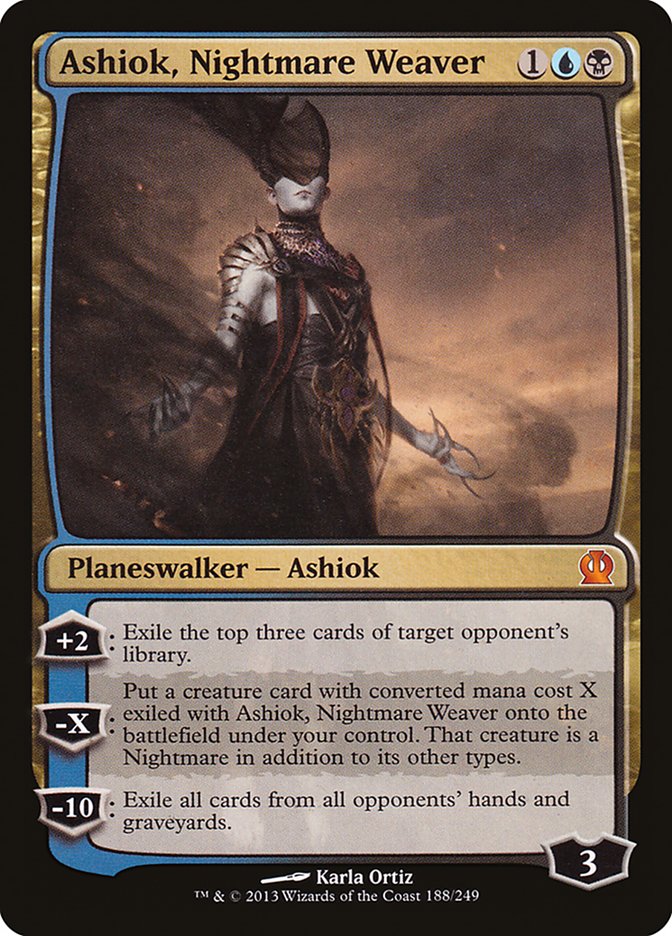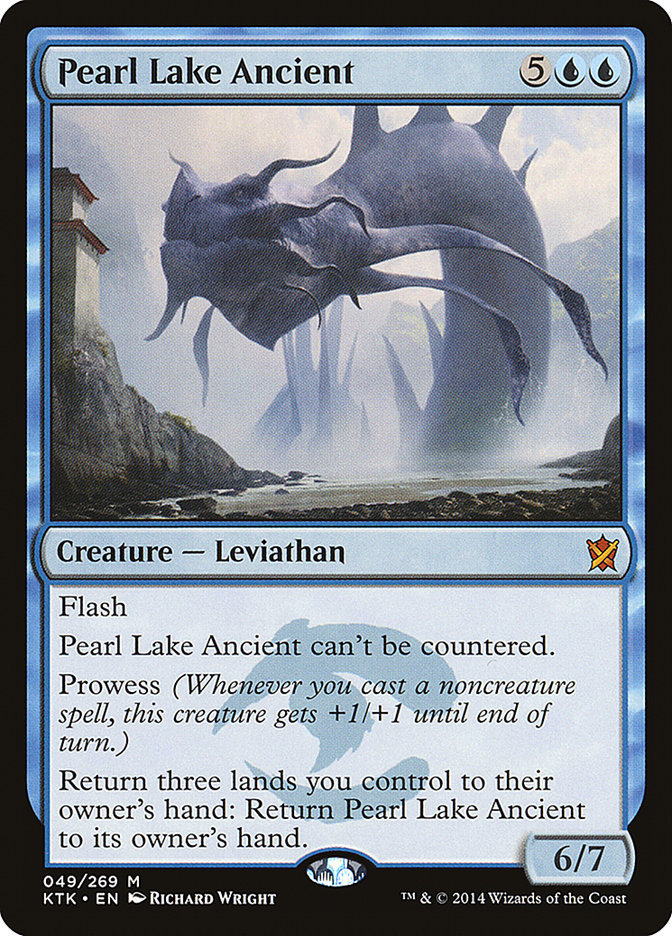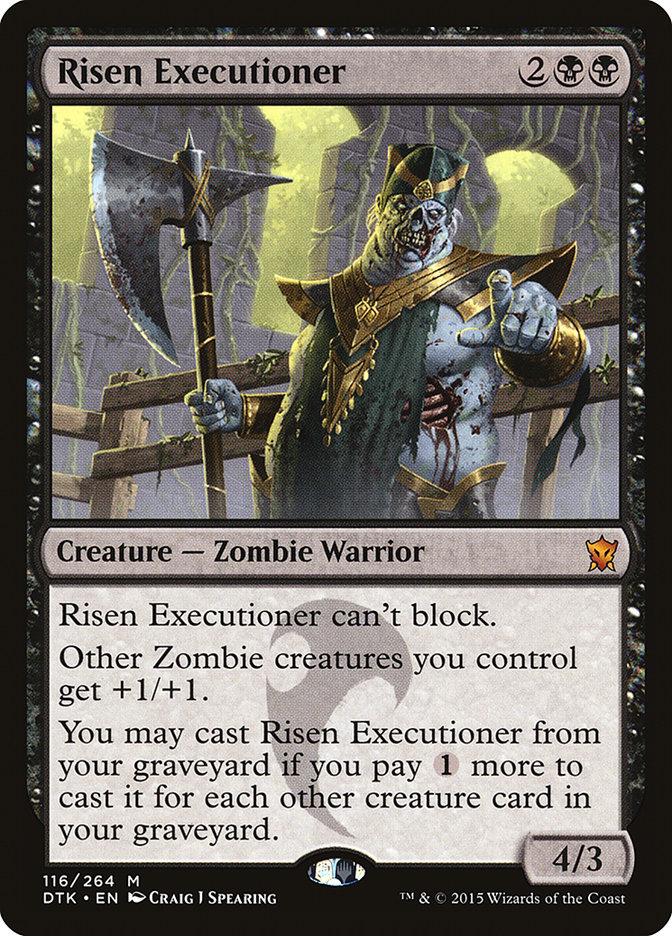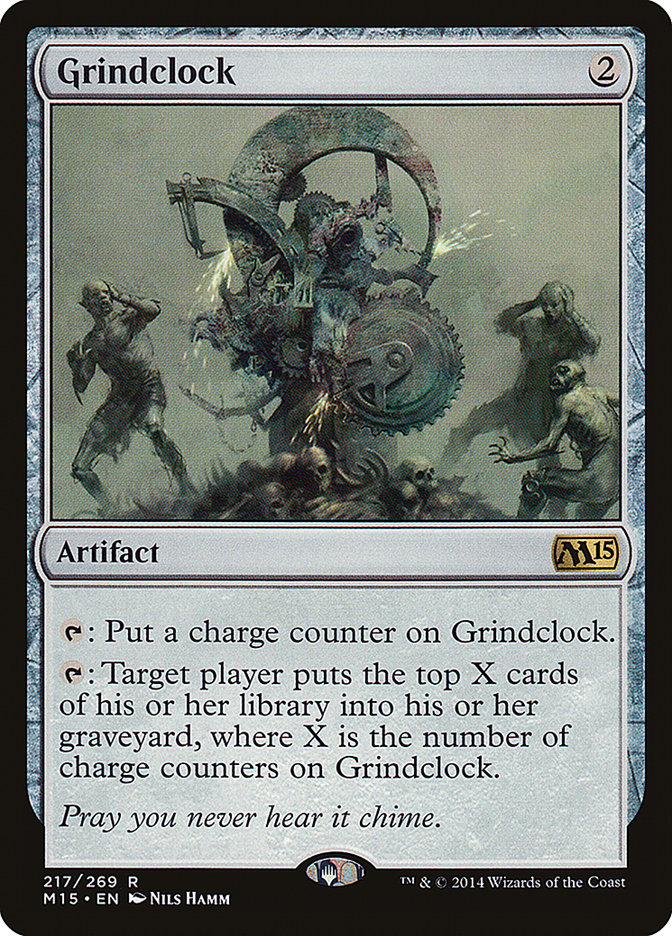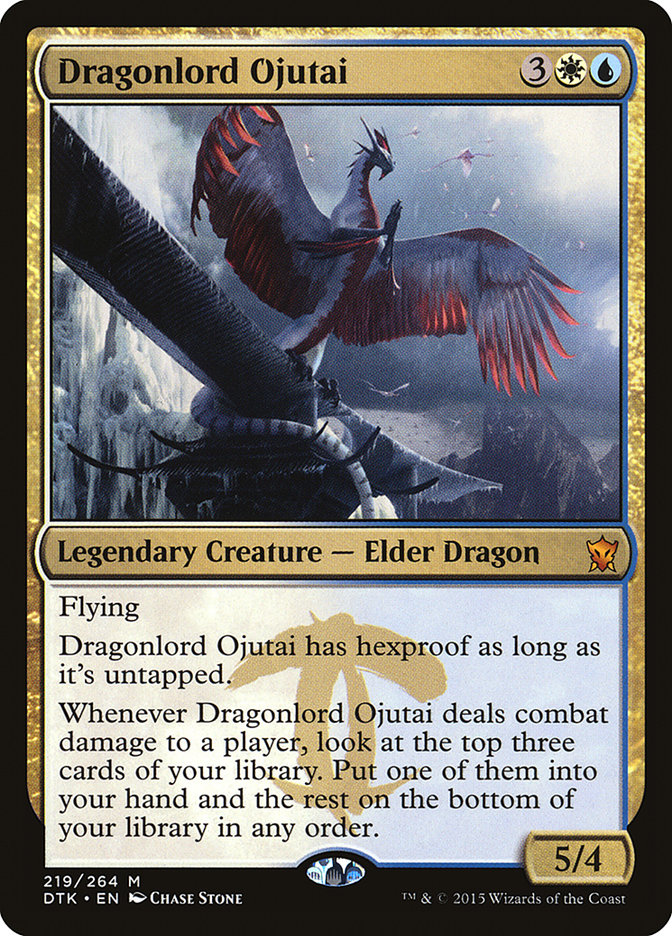The villain delivers a victory speech, explaining his brilliance to the hero. The hero struggles against the ropes binding them as they are slowly lowered
into a pool of hungry acid-sharks.
This is a familiar scene, one usually followed by an unlikely escape sequence due to the foolish arrogance and oversight of the villain. Only this time,
the villain planned ahead. The thermal exhaust port has been closed up. Mount Doom has been sealed off with concreteb and a squad of trusted orcs stand
guard with surface-to-air missiles read to shoot down any pesky eagles. Every henchman has been thoroughly vetted. The rebel forces and sons and daughters
of the hero have been dispatched weeks ago.
Just to be safeb the rope is cut half way through the speech and the hero drops into the shark infested waters uneventfully. The story ends.
This is the level of dedication and foresight required to be a successful control mage.
What’s that you say? The good guys always end up winning? Ha. Villains are easily dispatched in movies and books, but who do you think is hidden in the
shadows propagating these myths in popular media? The hardest threat to defeat is one you don’t even know exists.
But fending off plucky upstart heroes is just the beginning of a villain’s day, and it’s probably the easiest part of it too. The real challenge is when
they clash with another villainous mastermind. Sauron versus Darth Vader. Voldemort versus The Red King. What happens when two masterminds go up against
each other, both hiding in their fortresses, commanding armies, and hatching maniacal schemes?
Today I’ll be looking into just that. The control mirror and its nuances. Seems like an appropriate time to do so since Esper Dragons is on everyone’s
radar as the deck to beat in Standard. I’ll lay out some general guidelines and then see how they apply to the Esper Dragons mirror.
Part 1: So You Want To Play Control
There’s one match of Magic that jumps to my mind when I think of the quintessential control mirror. Mark Herberholz vs Guillaume Wafo-Tapa in the Semifinals
of Pro Tour Yokohama in 2007.
Creatures (5)
Lands (27)
Spells (28)

Creatures (7)
Lands (26)
Spells (27)

A great high level match. Plenty of interesting play and decisions. Similar lists. Lands that make creatures. Creatures that destroy lands. Tutors.
Extractions. Storage lands. It has it all and is definitely worth a watch if you have a couple spare hours and a taste for control mirrors.
If there are formative matches of Magic that define what style of player we become, this one certainly influenced me.
They don’t make em’ like they used to. More importantly, look at some of the creatures in the aggro decks of that Top 8. Blood Knight and Magus of the
Scroll? How easy control players had it back then! More like Magus of the LOL and Bad Knight.
Through the ages it’s felt like answers to creatures have become less universal and creatures have become more resilient and better at generating value. I
think the game is more balanced and better because of it, but overall, there are more ways for a control player to lose. More hurdles to overcome and
mistakes to be made. Here are some challenges you may encounter playing control decks and control mirrors.
Challenges
– Control mirrors are draining. Buckle up for grueling rounds that require constant decision making. Other matchups against midrange and aggro will have
key turns and decision points that will decide the game, but it will at least be over quicker. The control mirror grind is real.
– Time constraints. The clock is ticking, and it becomes an important part of the equation. This is one of the best parts of playing online. You can play
at your own pace and even spend ten minutes on a key decision. This is not how it works in real life.
– Control decks are difficult to play, especially if you’re inexperienced with them. Control mirrors turn things up to an 11. There’s less room to make
mistakes when you have a clear goal, like burn face and turn em’ sideways, and all your cards enable this goal. Not to say there isn’t nuance to all
archetypes, but it’s harder to do Mono-Red horrendously wrong.
Benefits
– Playing with a control deck against other archetypes can help you understand those decks. You can learn just by observing what your opponent does, when
they play creatures and burn, and noticing when they pressure you the most at the right times, and when they play right into your hand.
– Grow as a player. I’ve always enjoyed playing control because I make plenty of mistakes. Making mistakes is a great way to learn to not make them again.
There is beauty in all archetypes and all matchups. From burn versus burn to control versus control. It is useful to expand your skill set so you can play
what works when it’s the best deck to be playing. If control decks are hot, it’s good to know how to play them, and you should expect to run into the
mirror.
– Control decks often present interesting situations that are like puzzles. Finding the perfect way to stop an onslaught or gain an advantage in a long
drawn out mirror is rewarding. It can often require quick decision making in tough spots, and having a solid foundation of experience is incredibly useful.
Part 2: What Matters In A Control Mirror
Stage 1: Lands
Making your land drops each turn has always been the defining and most important part of the control mirror. This is true of essentially all games of
Magic, as lands let you cast spells, after all; it’s just amplified in control mirrors. Many decks can function off of two or three lands for a while. Not
so in control mirrors. You want to get to around eight+ land drops before you even think about missing one. Your deck is mostly answers, and you have
nothing to answer since your opponent isn’t presenting threats, so you start discarding while your opponent is happily developing their agriculture. This
allows them to win a crucial counter war and resolve a threat or planeswalker. Once they have an advantage and board presence, they can press it.
In case I didn’t make it clear, more lands > less lands. Seven land hands are perfectly keepable, and sometimes desirable, if the match is really
controlly. This effect is much less glaring after sideboard when there are more relevant cards in both your decks trading one-for-one or more
Thoughtseize-style effects to clear a way. Scry and Anticipate for lands in the earlygame, especially if you’re in danger of missing a land drop.
When does making land drops stop mattering?
Sometimes never. In a Sphinx’s Revelation + Elixir of Immortality mirror you want to keep making land drops indefinitely. In an Esper Dragons mirror match
you’ll eventually reach a point where you start trading cards until one of you is out of resources, and lands become less and less valuable at that point.
Still, that doesn’t happen until much later in the game.
Making lands drops is the most important part of the control mirror, especially game 1.
Stage 2: Patience.
Patience.
Patience.
Patience.
Your opponent blinks.
Steps out to far.
They are vulnerable.
An opening.
Attack.
Gain advantage.
Protect that advantage.
Build on that advantage.
Cut off avenues of a possible comeback.
Close out the game.
This is what makes land drops so important. Control mirrors usually heavily punish the player that blinks first and casts a spell when they shouldn’t be
doing so.
This is the essence of control mirrors. It’s better to stay fortified and defensive and let your opponent make a mistake.
Parry.
Punish.
Once you’ve both demonstrated that you have an ample supply of land, the next test is simply don’t tap out during your main phase.
Your opponent’s end step is your friend.
Your main phase is no man’s land.
This is most true for most control mirrors with counters in the mix. If you tap out for a planeswalker (perhaps any one of the Jace variety) and your
opponent counters it and follows it up with their own Jace, you are at a severe disadvantage since you now need to deal with and stop new Jaces from being
deployed. Obviously, this isn’t the case for the current Standard format since Jace, the Living Guildpact is appealing to precisely no one, but the same
principle applies. Tap out during your main phase, run into a counter, and now your opponent has free reign for to do what they want during their main
phase.
This is not so true when counters aren’t involved. With Abzan Control, you generally want to vomit out as much as you can as fast you can. But even this
isn’t always the case. If your opponent has three mana up and you play Siege Rhino and they Hero’s Downfall it and play their own Siege Rhino, you’re now
on the back foot.
In most matchups you use your life as a resource, perhaps trading life points to counter something and gain card advantage to clear the board and have
counters up.
In hard control mirrors starting life may barely matter, it could be 100 or 5 and it wouldn’t matter much.
Save your counters for threats. Big card draw can qualify, but Divination or Anticipate rarely does.
In general it’s much better to continue discarding good cards rather than make desperation plays in your main phase. Say you are in a bad spot. Stand
strong. No need to panic, you might draw lands soon. Your opponent might even get excited and try to capitalize on the situation by overextending.
Choose to react instead of acting unless you have an unstoppable opening.
Stage 3: The End Game
It’s easy to get sloppy and stop being vigilant about lands, but mana can be more important now than ever. If you counter something on your end step and
don’t have enough mana left, an opponent can find an opening to resolve a big threat. Winning counter wars and chaining card advantage is what matters now.
Unstoppable win conditions are rare nowadays. There is no Cavern of Souls into Aetherling play. Solid play will trump tech.
Where is your advantage? Practice? Patience? Tech?
Part 3: Deckbuilding
Once a control game gets going and both players have passed the tests of “make land drops” and “not randomly tapping out for no good reason in the
earlygame,” the game will often be decided by who has a better deck composition. Sometimes as little as a one card difference can be the deciding factor
before cards are even drawn.
Planeswalkers (5)
Lands (27)
Spells (28)

This deck shows a lot of promise, especially when it comes to going over the top of Esper Dragons, which is very difficult to do.
Ashiok, Nightmare Weaver is in a pretty great place right now since stock in Hero’s Downfall is falling, and winning through decking in the control mirror
is realistic right now. Having a win condition that costs less than the Dragons and can even sneak in through counter magic on the play if your opponent
plays a tapped land on turn 2 is appealing. There are also plenty of juicy creatures to steal, including Dragonlord Ojutai.
Versatile Answers
Not having too many wasted slots on cards that do nothing against other control decks is vital for getting an advantage in a control mirror.
If you’re building an Esper Dragons list and having to choose between another removal spell in Bile Blight versus Ultimate Price versus Hero’s Downfall
versus Foul-Tongue Invocation, noticing that Foul-Tongue Invocation is actually quite decent against other Esper Dragons list can help you to ever so
slightly get a boost in the mirror. You can actually count the number of relevant spells against other control decks and try and increase the count a
little anywhere you can.
Counters stop everything, which is what makes Silumgar’s Scorn so effective. Cheap and universally good.
A deck that is molded and tuned will find the right balance. Having the wrong answer can be devastating for a control deck, whereas not so much for an
aggro deck since most tools are serving a very focused purpose.
Lategame Trumps for the Esper Dragons Mirror
Easily answerable by Hero’s Downfall and best used to exile something the opponent has before it dies.
Cheap. Scary. Capable of winning the game if left unchecked. If it hits a few threats, you can win by waiting for your opponent to deck.
Much better after sideboard where it doesn’t soak up random removal. Still great and game winning, you just have to wait a while and protect it from
Thoughtseize.
Slow and nearly unstoppable. Probably not worth the investment of a slot since it’s just too clunky and expensive and leaves you exposed to better threats
every time you cast it.
Played on turn 2, it might just be game since it’s very hard to answer. Drawn late, it might be too slow and do-nothing as you get beat down by Dragonlord
Ojutai.
Great sideboard card capable of catching people unaware and running away with the game.
Fills multiple roles, efficient, hexproof. The gold standard finisher against non-control decks and still good in the mirror.
The Sideboard
Sideboard efficiency is important. You’ll see lots of one-ofs in my control sideboards that come in against multiple matchups.
Things can drastically change after sideboard in a control matchup. The ironic thing is that removal that was dead maindeck can be decent after sideboard
when everyone is taking out removal and bringing in threats.
You can over-sideboard in counters when your opponent is bringing in Tasigur, the Golden Fang or Ashiok, Nightmare Weaver, and you actually want a Hero’s
Downfall or two as insurance against a resolved threat.
An unexpected Grizzly Bears that resolves can be deadly if you’re holding a fist full of counters.
Deckbuilder’s Dilemma
People building their Esper Dragons lists must take into account the pushback they’re receiving from the rest of the format. They also need to be trying to
beat the mirror. They might be better off against the rest of the format if no Esper Dragons lists start maindecking Ashiok, Nightmare Weaver or Pearl Lake
Ancient, but an individual might be better off defecting and adding some cards to beat the mirror. This can lead to the best deck spreading itself too
thin, a victim of its own success.
This push and pull of the metagame should help it correct and balance itself. The best decks will break down and spawn new decks. It is like some cosmic
dance where a star takes on too much mass and collapses into a black hole with a bookcase in it. Unless you’re Caw-Blade and you just show every challenger
the back of your hand without blinking.
Part 4: Actually Playing
Why does a cat play with a mouse before delivering a fatal blow?
It is being cautious. It doesn’t want to get bitten by the mouse, so it bats it around to stun and disorient it before delivering the final blow.
Caution and paranoia are good. It is good to be safe, especially when you are way ahead.
Take your time and take no risks. To successfully avoid a risk, you must spot it.
Lategame vigilance is a great habit to have. It’s easy to get sloppy when you’re a big favorite to win. Practice making the right play even when it feels
like it doesn’t matter.
Technical perfection is impossible. Having the right plan isn’t.
Practice. Desperation plays are sometimes required. Your intuition will guide you after a while.
Recognize what your opponent is trying to do and that they have a plan as well. A strange play may be them trying to bait you into tapping out.
Have a plan.
Part 5: Applying These Ideas to the Esper Dragons Mirror
Esper Dragons is actually pretty midrangey as far as control decks go. There are no planeswalkers that immediately draw you cards. No Aetherling. No
Sphinx’s Revelation. The threats you both have are easily answered. It basically turns into a slugfest of who can get the most value. There are no trump
cards unless someone is packing something special, although Dig Through Time and Dragonlord’s Prerogative are going to grab the most value.
Seven land hands are not going to be great here, although they are probably still keepable with a few Temples.
Applying everything above in regards to Esper Dragons is not a hard guide, especially when the matchup is more about gaining value where you can find it,
and there are no knock-out cards or devastating planeswalkers.
Creatures (4)
Planeswalkers (3)
Lands (26)
Spells (27)

Gerard Fabino’s list from the Top 4 of the SCG Open in Cleveland looks like a solid evolution of the deck. Say we were playing a mirror match with this
deck. What would the general guidelines for a game look like?
Lands 1 Through 4 – Early
Sneaking an Ashiok, Nightmare Weaver into play is the only early power move available, and it’s still foiled by a Hero’s Downfall. Still very much worth
resolving if the coast is clear.
If you don’t have an early play you want to force through, I would probably hold onto Thoughtseize at this point.
Lands 5 Through 8 – Middle
Tapping out for a Dragon is a big investment, and you shouldn’t be doing so (unless you know the coast is completely clear from a Thoughtseize).
Look for little advantages and stay focused on making land drops while looking for openings.
Consider not casting Dig Through Time early on in your opponent’s end step if you have a full grip of cards and lands. Also consider not countering your
opponents Dig Through Time if they have a full grip. Resolving an early Dig Through Time isn’t the end of the world right now since its effectiveness is
capped by hand size. Get to a point where you’re expending some cards first and need to refuel.
Lands 8+ – Late
If your hand is good, you can start probing and pressuring. If it’s not so hot but you have lots of lands, stay reactive.
If you start pushing through, continue to press forward slowly. You never really need or want more than one threat in play.
There comes a point where you start trading cards and whoever has the best hand composition will pull ahead. Haven of the Spirit Dragon, Dig Through Time,
and your lategame finishers become crucial. One person should start to snowball.
If Ashiok, Nightmare Weaver is a factor and you trade resources equally, decking may become a factor. It’s entirely possible you run someone completely out
of threats with a few good mills and answers.
Conclusion
Do as the superior super villain does. Not the whole world domination thing, or kidnapping people thing, or being evil thing. The planning ahead thing. The
crushing opponents by a landslide thing. End the game with a grip full of countermagic at the ready.
Spoil some fun. Easily disrupt a creative new combo deck. Lazily deflect the aggro players coming to ransack your lands and pillage your cards. Outwit the
foolish mages who think they can beat you at your own game. You thought you could come into my castle and rescue my stolen princess? Not today.
Stalk your prey, be patient, analyze the metagame for weaknesses and predict its patterns.
As the life goes out of the eyes of the mage across from you that just had their fourth card in a row countered and their irises slowly turn blue, realize
that you have just witnessed the birth of a control player. They will rise up soon enough to challenge you once again.
You will have to fend them off.
Be ready to do so.


